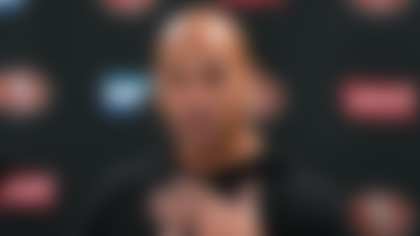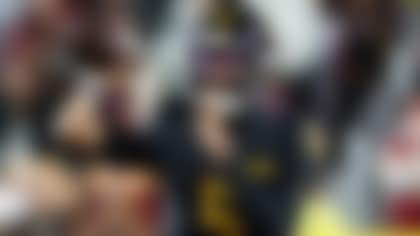"History is a gallery of pictures in which there are few originals and many copies."
- Alexis de Tocqueville
At least filmmaker Stanley Kubrick can't be accused of staging the event, though there were spacemen with jet packs flying around.
Two seminal events occurred during the late 1960s that changed the United States: NASA put a man on the moon, and the AFL and NFL agreed to play each other in what became the first Super Bowl.
Both Neil Armstrong's moon walk and the Green Bay Packers matchup with the Kansas City Chiefs were broadcast on television to millions across the country. They were both recorded on tape. However, they weren't recorded for posterity. To this day, the original Apollo 11 tapes and the original complete broadcasts of Super Bowl I can't be found.
There are plenty of conspiracy theories floating around on the moon landing, including many that insist the event was staged and filmed by one of the world's great movie directors. But the tale of the missing Super Bowl I tapes is just as colorful, intriguing and surreal.
The actual matchup, originally marketed as the AFL-NFL World Championship Game, was played at the Los Angeles Memorial Coliseum on Jan. 15, 1967. The Packers held a tight 14-10 lead at halftime, but rattled off 21 consecutive points during the final 30 minutes for a convincing 35-10 win over the upstart Chiefs.
The more captivating storyline, though, was the production of the game itself. Super Bowl I was the first and last Super Bowl to be broadcast simultaneously on two network channels. The AFL had a deal with NBC and the NFL was teamed up with CBS. The NBC announcing team consisted of Curt Gowdy, Paul Christman and Charlie Jones while Ray Scott, Jack Whitaker, Frank Gifford and Pat Summerall provided commentary for CBS.
Just starting its second year, NFL Films also had a presence, albeit a small one.
"We started with five (people) because it was very expensive to shoot these games," said Ed Sabol, NFL Films founder. "It was easier than a regular season high rivalry game. There weren't many people on the sidelines. The first Super Bowl was not a big deal."
It wasn't even the top sports event promoted that day. According to writer David Roth, a Harlem Globetrotters game played on an aircraft carrier was the sports recommendation of choice in TV Guide that week. Footage shows a stadium that was quite empty. Ticket prices were considered expensive at $10 and $12, so even with 61,946 in attendance, there were more than 30,000 empty seats in the historic Coliseum.
There also was no pyrotechnic, acrobatic razzmatazz halftime show featuring Katy Perry and the Left Shark. But there were two university marching bands, a trumpeter, 300 pigeons, 10,000 balloons and men with jet packs who buzzed around the Coliseum like drunken human drones.
One of the other memorable highlights was the second-half kickoff, which had to be done twice due to broadcast problems. It was rumored NBC was still in commercial break when the kickoff happened according to Bill Creasy, CBS's Super Bowl I producer.
But that little glitch was nothing compared to what would happen later.
The consumer VCR hadn't been invented yet, so recording programming was expensive, and like a palimpsest of ancient times, tapes were wiped clean and reused.
"If you can believe it, they recorded soap operas over the game tapes," NFL Films co-founder Steve Sabol said.
Yes, that's correct, neither NBC nor CBS has a copy of the first Super Bowl broadcast. For decades, the tape has manifested its own titanic folklore. Like a modern-day search for Atlantis or El Dorado, tape collectors, sports fans and historians have long pursued for the missing tapes. Fantastic rumors have sprouted up, placing a copy of the game in the possession of Playboy founder Hugh Hefner and a recording somewhere in Cuba, according to The Wall Street Journal.
"If you can believe it, they recorded soap operas over the game tapes."
-- Steve Sabol
In 2005, Sports Illustrated placed a $1 million value to the tape and listed it as one of its 25 Lost Treasures.
During the same summer that SI exposed the mystery to mainstream sports fans, a man discovered a copy of the game in a Wilkes-Barre, Pa. attic. The man's father had recorded a majority of the game on two-inch quadruplex tapes. A few years later, the man brought the tapes to the Paley Center for Media in New York. The tapes were restored. Though halftime and some of the third quarter are missing, it's believed to be the best copy we have of the entire broadcast of the game. There are even commercials of the era from McDonalds and Muriel Cigars. But the tape remains locked up until a deal can be worked out between the owner and a suitor.
But on Friday, NFL Network will present the whole game using NFL Films footage. Viewers will see all of the plays with many of the sequence gaps filled with original radio calls. It's as close as we've come to seeing the broadcast in nearly 50 years.
NFL Films also confirmed that it doesn't have any broadcast tapes from Super Bowl II and other Super Bowl games are still missing some broadcast footage. Yet we have to dream that somewhere in some dusty garage or within a neighborhood flea market, complete broadcast copies of these games exist waiting to be found.
*Amar Shah is the Digital Features Editor at NFL.com. You can reach him at @amarshahism.
*



